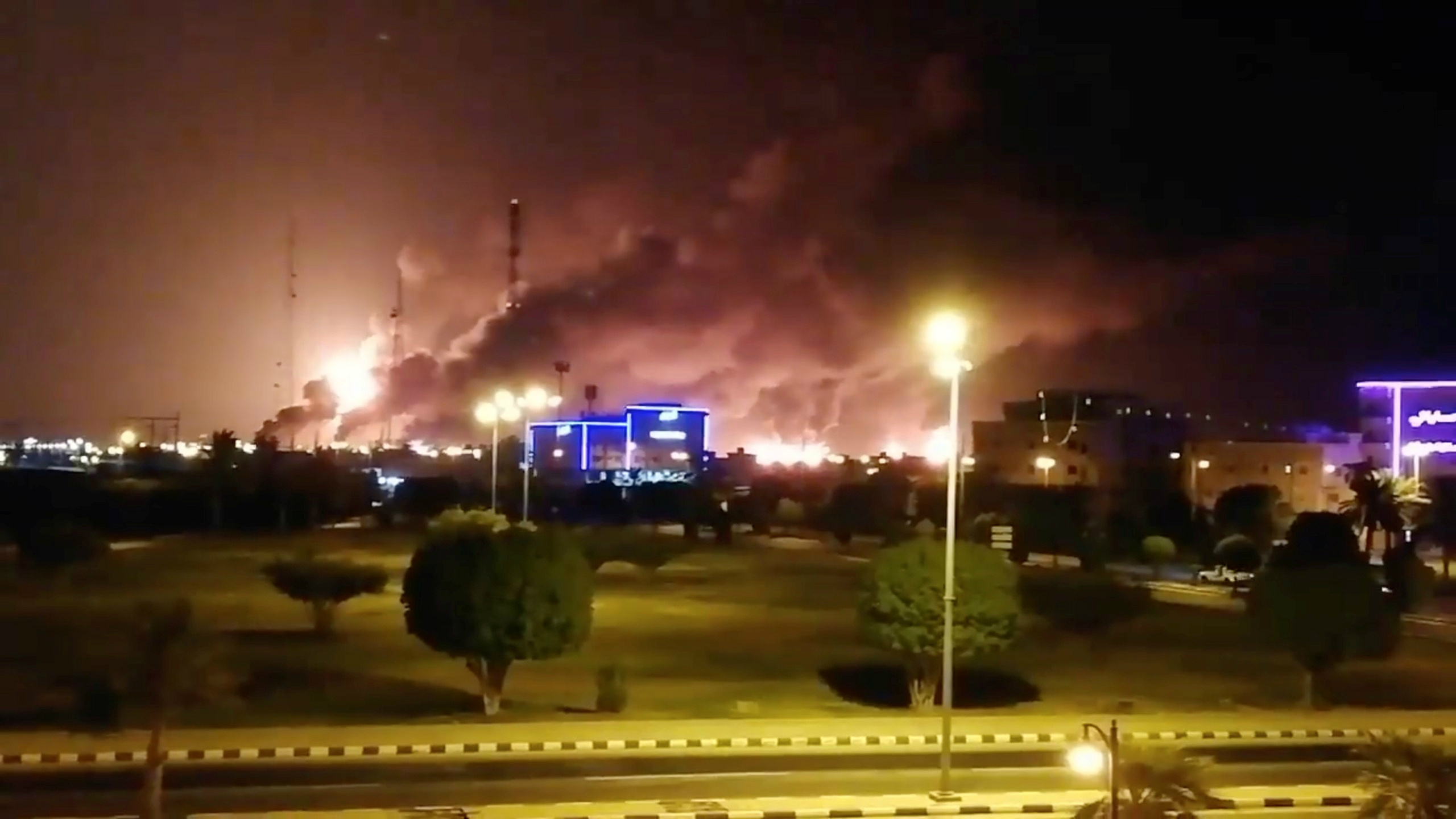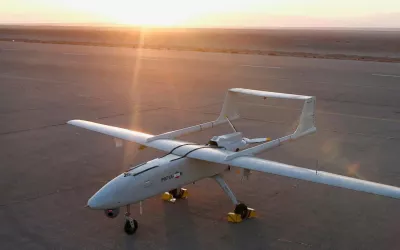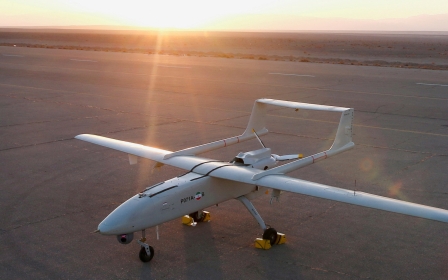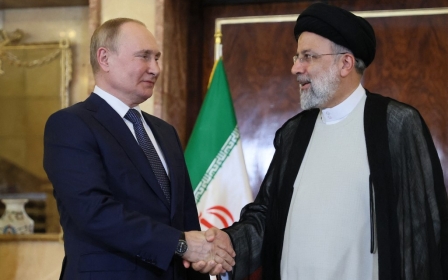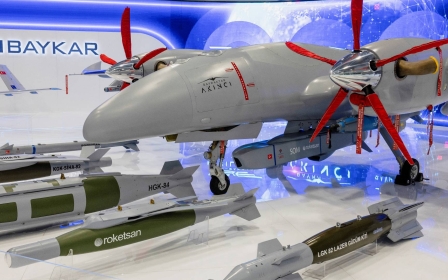Drone wars and the rise of Iran's military-industrial complex

More than a decade ago, in late 2011, news emerged that an American Lockheed Martin RQ-170 Sentinel unmanned aerial vehicle (UAV) had been brought down by Iran, which then began to reverse-engineer it, ultimately producing the Shahed 171 Simorgh and Shahed Saegheh.
For years, former US President Barack Obama tried to persuade Iran to return the original drone; they never did. They had better things to do with it.
The sustained rivalries of the US, Israel, Saudi Arabia and Iran for regional domination have effectively turned them all into warring garrison states
Iranian authorities boasted that the "spoofing" technique they had used to down the UAV, which took into account latitudinal and longitudinal data, made the drone "land on its own where we wanted it to, without having to crack the remote-control signals and communications" from the US control centre.
The drone was reportedly part of a CIA intelligence project to collect data on Iranian nuclear sites. The US was outed, with their drone commandeered and brought straight to Iranian military laboratories.
In 2013, Iran said it had decoded footage from the downed drone, which was subsequently aired by Iranian news agencies. By the following year, Iran said it had produced its own version of the drone, an assertion that was rejected by US officials. Reports emerged that Russia and China were asking Iran to share details with them.
By 2016, Iran publicly announced it had reproduced the RQ-170 “with improved features”, opting to call it the Simorgh, after the legendary bird in Persian mythology.
To cut a long story short, by 2018, Israeli media outlets were reporting: “Iranian UAV that entered Israeli airspace seems to be American stealth knock-off”, noting that a drone shot down by Israeli forces was similar to the drone seized in 2011, and “was advanced and based on western technology”.
Russia-Ukraine war
Last year, it became clear that Iranian drones based on US technology - but re-engineered and mass-produced domestically - were actively supporting Russia in its invasion and occupation of Ukraine. According to a BBC report, the Ukrainian government and western intelligence agencies said Russia had "been using Iranian-made Shahed-136 drones in the conflict since autumn" of 2022.
Iran said it had only given Russia a small supply of its drones before the war. But the Guardian subsequently reported that the Ukrainian military had provided “evidence that at least some of the Iranian-made drones used by Russia in its war were probably supplied after Moscow’s full-scale invasion in February”.
News reports quickly began to link the activity of Iranian drones in Ukraine to the war in Yemen. “The strategy used by Russia to strike the Ukrainian electricity grid was largely developed by Iran’s proxies in Yemen,” noted an article in the National Interest.
By September 2019, Iran was the primary suspect behind an attack on Saudi oil facilities, for which Yemen’s Houthi rebels had claimed responsibility: “Iran has dismissed US accusations that it was responsible for a series of explosive drone attacks on the world’s largest petroleum processing facility in Saudi Arabia that disrupted more than half of the kingdom’s oil output and could affect global supplies,” the Guardian reported.
By late 2022, Iran was fully on the global scene as a major military supplier. According to an October Reuters report, Iran had “promised to provide Russia with surface-to-surface missiles, in addition to more drones … a move that has infuriated the United States and other western powers which are backing Ukraine in the war”.
Yemen and Ukraine were not the only theatres of operation for Iranian drones, the report added: “Iran and the regional forces it backs have increasingly relied in recent years on drones in Yemen, Syria and Iraq, where it has spread its influence through proxies.”
Garrison state
By mid-September of last year, after the death in custody of a young Kurdish Iranian woman, Mahsa Amini, a massive social uprising against the ruling state caught the security and intelligence apparatus of the Islamic Republic by surprise. The ruling elite had so thoroughly entrenched itself in the geopolitics of the region that it had apparently forgotten its domestic responsibilities in an impoverished and battered nation.
Today, the Islamic Revolutionary Guard Corps, or what is generically known in Persian as Sepah, is a Praetorian military-industrial complex almost entirely unto itself in territorial, economic, strategic, intelligence, security, ideological and geopolitical terms.
From Yemen to Ukraine, Iran is flexing the capabilities of its limited but significant military-industrial complex, while facing a widespread social uprising at home. Its inability to sustain internal legitimacy over the last four decades is linked to its rise as a "garrison state".
The two interrelated terms of “garrison state” and “military-industrial complex” are American in origin and were meant to describe the US itself, coined by American sociologist Harold Lasswell in 1941 and former President Dwight Eisenhower in 1961, respectively. But the two terms have by now become widely applicable to other states, especially Israel, which is literally a garrison state that sees itself as a villa in a jungle.
Indeed, the sustained rivalries of the US, Israel, Saudi Arabia and Iran for regional domination have effectively turned them all into warring garrison states, each pursuing their imperial projects.
The rise of Iran as a significant military supplier in the region has come at some calculated risk. As one analyst noted: “For Iran, the Ukraine crisis offers a way to enjoy a more equitable relationship with a great power - Russia - even though supplying the drones to President Vladimir Putin has come at significant cost to Tehran, triggering a cooling of interest from US President Joe Biden’s administration in a renewed nuclear deal with Iran and pushing the European Union into Ukraine-related sanctions on Iran.”
The aggressive transmutation of ruling regimes into warring garrison states presiding over competitive military industrial complexes has degenerated all these states into alien powers treating entire nations as their military bases.
The revolt of nations, whether Palestinians against Israel, Egyptians against Sisi’s military junta, or Iranians against the Islamic Republic is a wake-up call that business as usual is no longer viable.
The views expressed in this article belong to the author and do not necessarily reflect the editorial policy of Middle East Eye.
Middle East Eye propose une couverture et une analyse indépendantes et incomparables du Moyen-Orient, de l’Afrique du Nord et d’autres régions du monde. Pour en savoir plus sur la reprise de ce contenu et les frais qui s’appliquent, veuillez remplir ce formulaire [en anglais]. Pour en savoir plus sur MEE, cliquez ici [en anglais].



